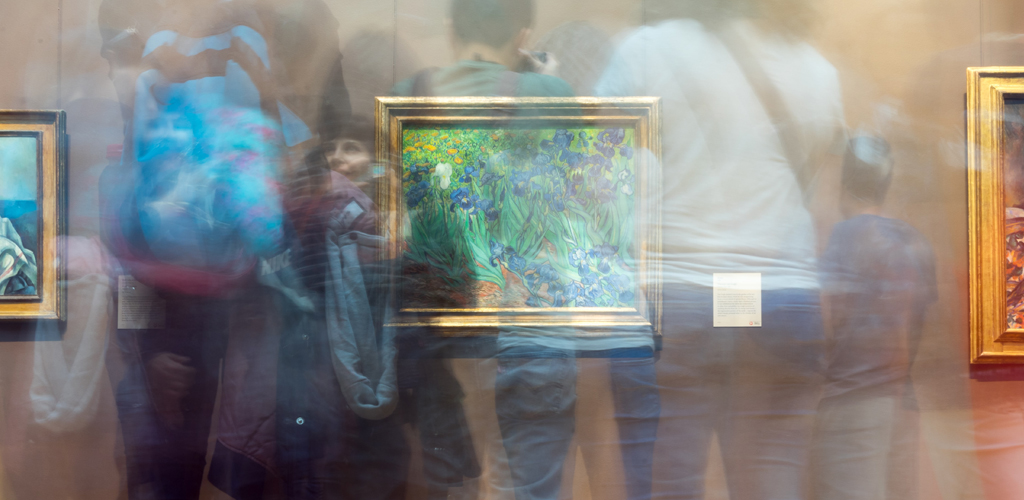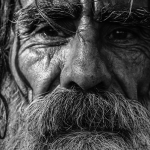I’m the only parent sitting with a kid who isn’t hers. It takes some work to coax a smile out of Avery, but once I do, we’re giggling and bouncing on the lumpy school bus seat. Avery is bony knees and elbows skinny. A mouth of teeth at war with each other. I picture him standing alone on the playground during recess.
Oliver told me about Avery. Quiet, smart, he lives with his grandma a few blocks from the school.
“Sometimes Avery wears the same clothes three or four days in a row,” Oliver adds in a whisper. I can’t tell if he’s ashamed to tell me or embarrassed that he noticed.
How did I produce such a child? Thoughtful and observant. But a rule-bound pleaser. “Wear long sleeves over your tattoo, Mama, okay?” he begged before the field trip. “Take out your nose ring.”
Our bus driver, a leadfoot who leans on the horn, changes lanes as we hurtle onto the downtown exit. Avery and I laugh as we wave at the cars left in our wake.
Oliver looks back from his seat three rows ahead of us. “Do you have to be so loud?” his eyes scold me.
We wait on the museum’s main level for Ms. Tomoka. When the group moves toward the escalators, Avery and I inch behind Michael Z and his mother. Small and unfamiliar, Avery’s damp fingers curl into a sticky ball in my hand. Oliver stands at the head of the line, thrilled to be paired with Ms. Tomoka, his idol.
Our turn and we rise above the pop art display of muscle cars suspended on invisible wires. Kids squeal as we arrive at the second floor where a special exhibit of Jacob Lawrence’s “Migration” series anchors a corner gallery. A knot of kids has already gathered around a docent speaking about Lawrence’s work.
“Why don’t they have faces?” A little girl points at the first panel.
I took the day off work just to see the Lawrence exhibit, so I lean in for the answer. But Avery tugs me away from the group.
“Ms. Beckman? I need to go…”
I find a bathroom on the far end of the gallery and stand sentry, waiting for the tiny white woman in a tailored suit to explain why a Black painter wouldn’t portray the individual humanity of his Black subjects. She tosses out phrases like “Jim Crow,” and “dynamic cubism,” as if the kids know what they mean.
Led by Ms. Tomoka and Oliver, the class moves on to an exhibit of Pacific Northwest Native masks. The gallery echoes with the shrieks and giggles of thirty first graders, followed by Ms. Tomoka’s voice reminding the kids to walk, not run. I wait, peering down the dark gallery at Lawrence’s planes of color: black, green, yellow, and red.
When Avery emerges from the bathroom, I nudge him toward the Lawrence exhibit.
“Let’s take a quick look.”
Avery halts in front of panel 40, “The Migrants Arrived in Great Numbers.”
We examine the painting. Four groups of people hold suitcases as they hurry across a bare brown landscape. Triangular bodies tilted to the left, eyes fixed on a point in the distance. All except one little boy in red, who turns back toward a family behind him.
“Why aren’t they looking at each other?”
“I don’t know. Maybe they’re scared to go somewhere new. Or they’re just trying to get somewhere fast.”
I move to the next panel, circling the gallery in a quick loop. By now the kids and chaperones are in the activity room making masks or watching a video about Lawrence.
We reach the escalator, Avery’s hand in mine. Just as the top step catches and starts gliding downwards, he lets go. Holding the rail, I twist around and see Avery above me. As I scramble up the moving escalator, Avery waves before disappearing.
Chest tight with panic, I reach the top. Avery stands in the Lawrence gallery, in front of the boy in red.
“Why is he looking back?” He points at the boy.
“Maybe he wants them to hurry up. He looks happy. See him swing that suitcase?”
As I lean in to study the painting, I see that in this barren landscape, the only grass grows beneath the feet of the moving people.
“Maybe he needs to know the others are still with him,” Avery says.
We squeeze our way around the crowded gallery, glimpsing trains and kitchens, skies filled with dark, ominous birds.
Down at the activity area, we find Ms. Tomoka and Oliver waiting outside. Oliver holds a black-and-green papier-mâché mask, eyes cloaked in worry.
“What took you so long, Ms. Beckman?” her perky smile now a frown.
I smile at Oliver who looks away, then turn to Ms. Tomoka.
“Avery and I wanted to spend time with our favorite painting.”
Avery slips a hand in mine. Oliver looks down at his artwork, rubs a thumb against the mask’s nose.
“Do we still have time to make a mask?”
Ms. Tomoka nods. “The bus leaves in thirty minutes.”
While Ms. Tomoka helps a girl tie string to the back of her mask, Oliver juggles the mask in his hands, eyes on the floor.
“What kind of mask shall we make?” I steer Avery into the activity room, my eyes seeking my son’s. “Maybe Oliver can show us how.”
…
Biography
Phebe Jewell’s work appears in many journals, including Monkeybicycle, Spelk, New Flash Fiction Review, Bending Genres, and The Cabinet of Heed. Her story “¿Cómo Está Tu Madre?” was chosen for wigleaf‘s 2021 Top 50 for (very) short fiction. A teacher at Seattle Central College, she also volunteers for the Freedom Education Project Puget Sound, a nonprofit providing college courses for women in prison. Read her at phebejewellwrites.com.
Image: unsplash.com





